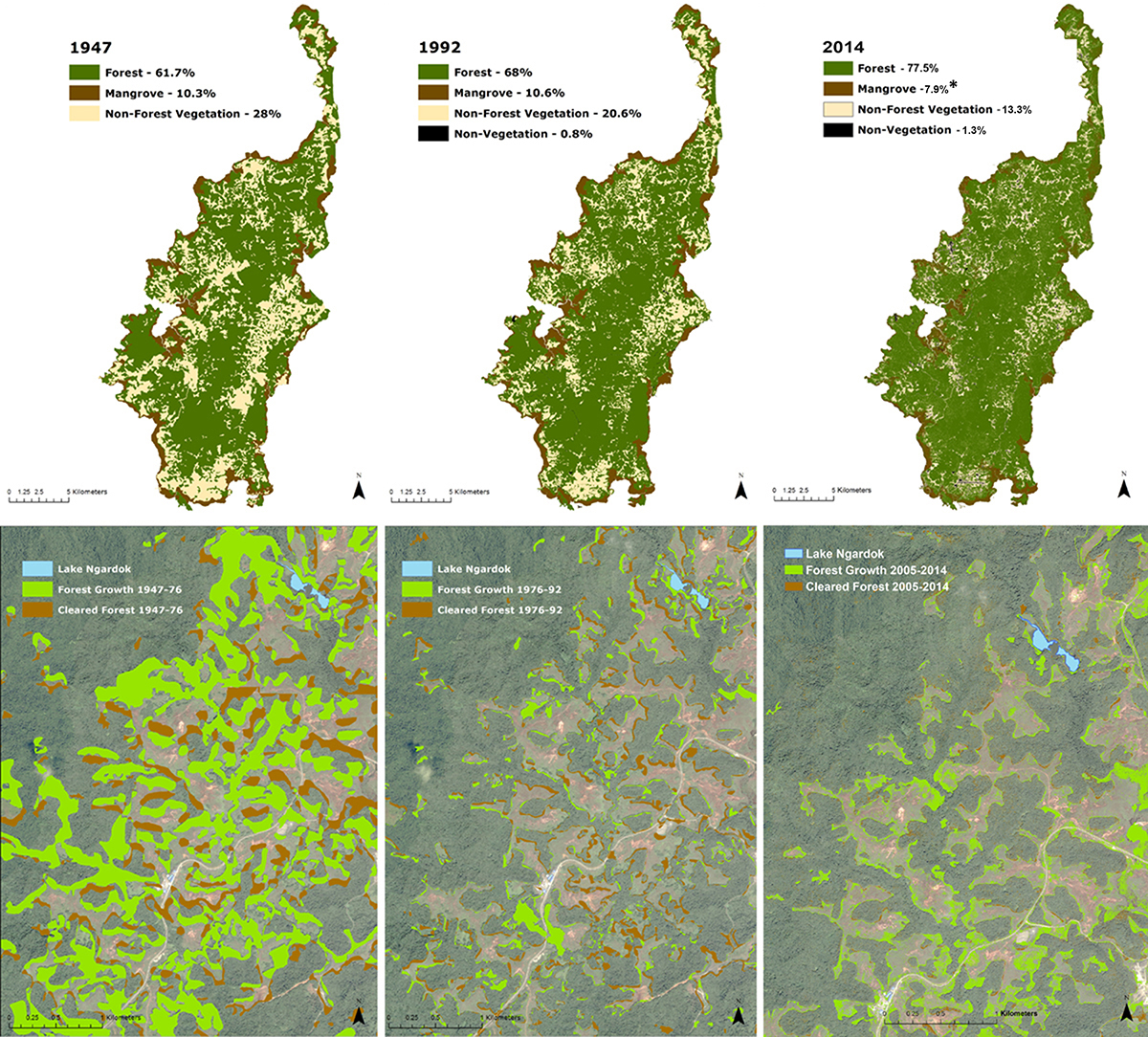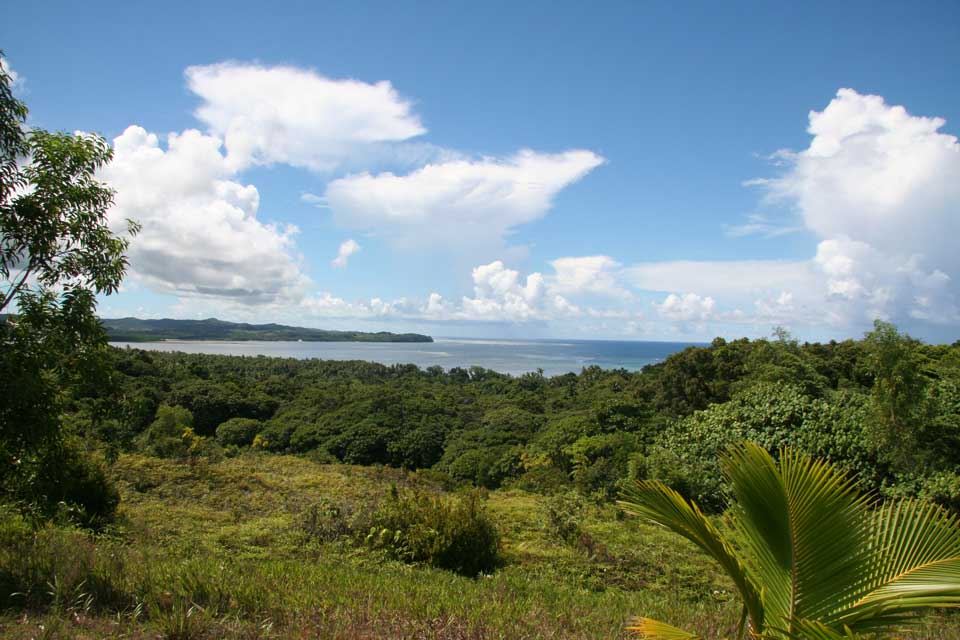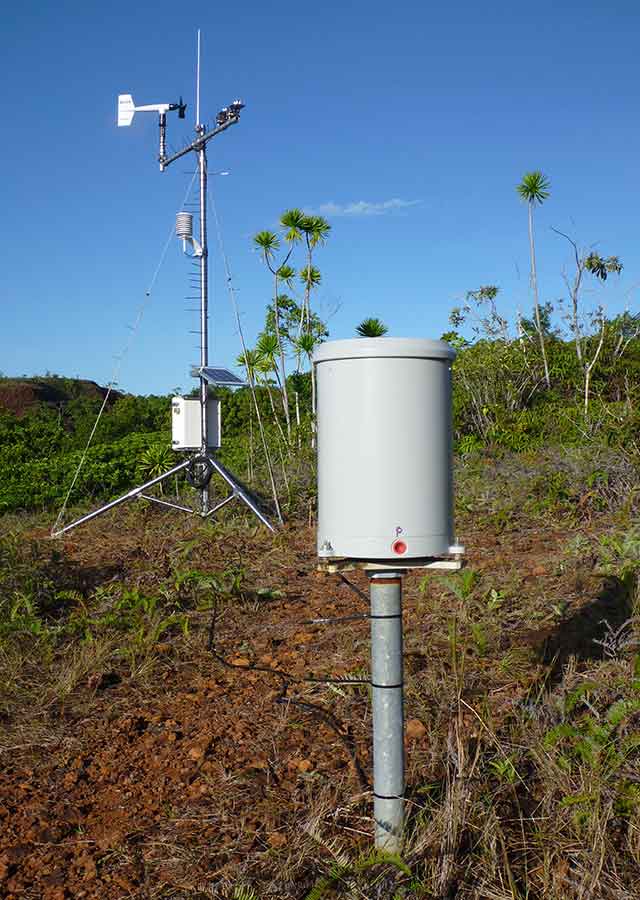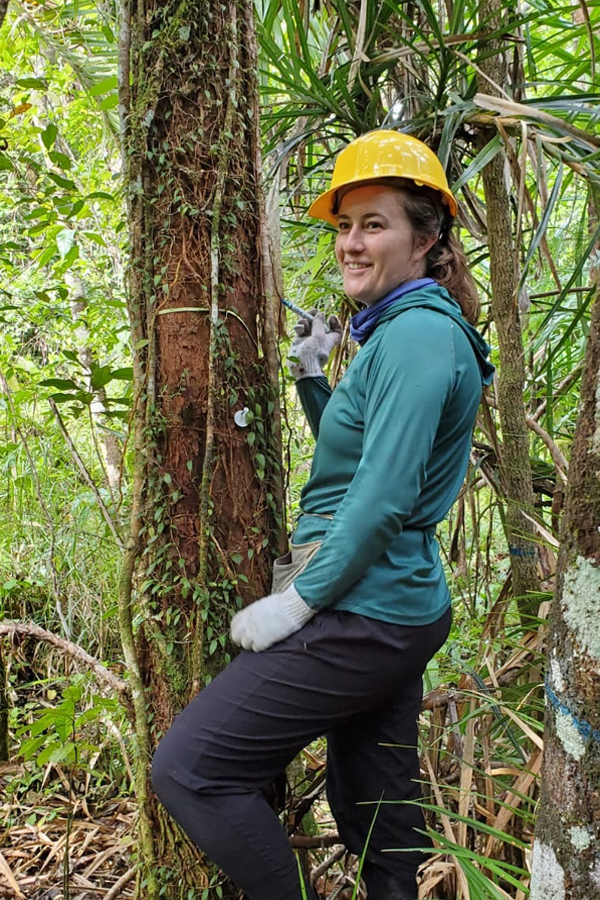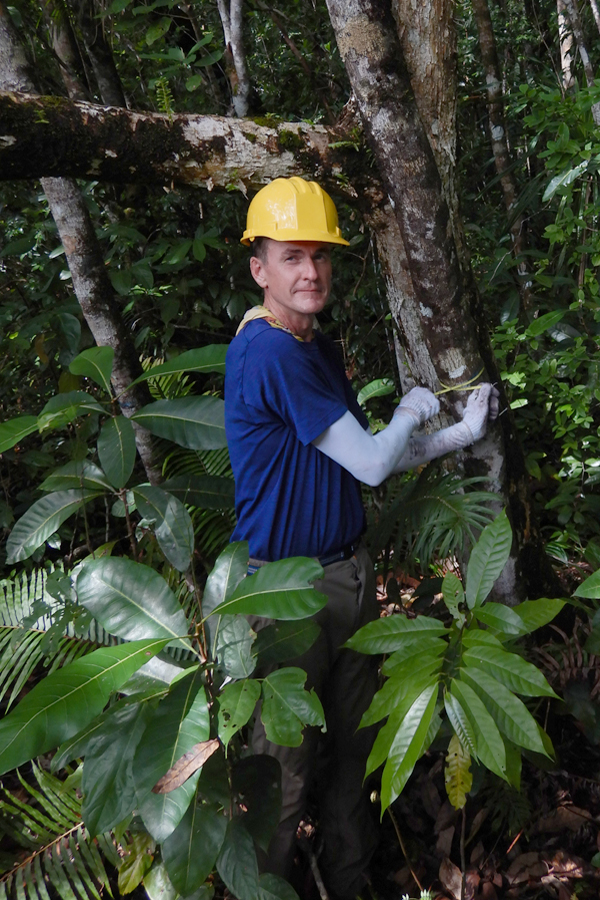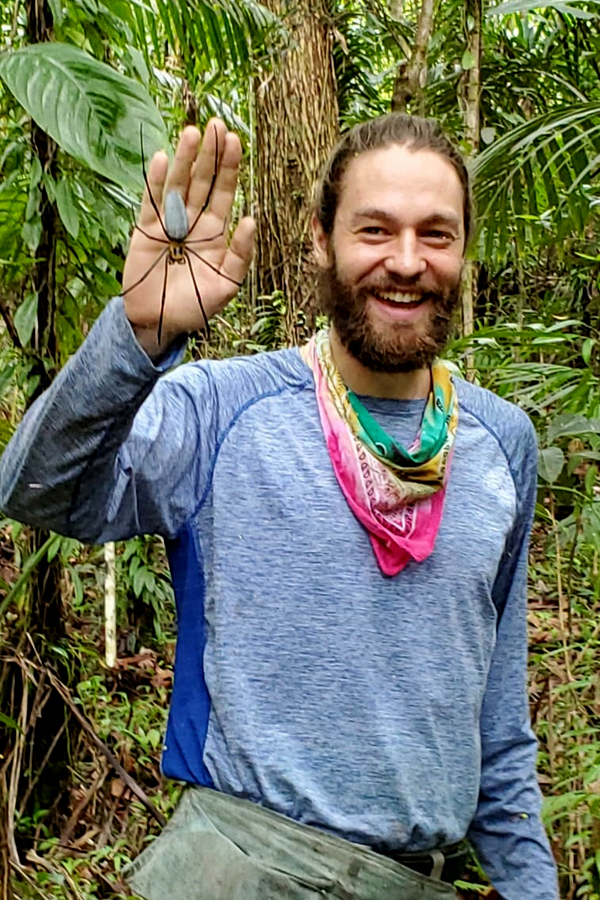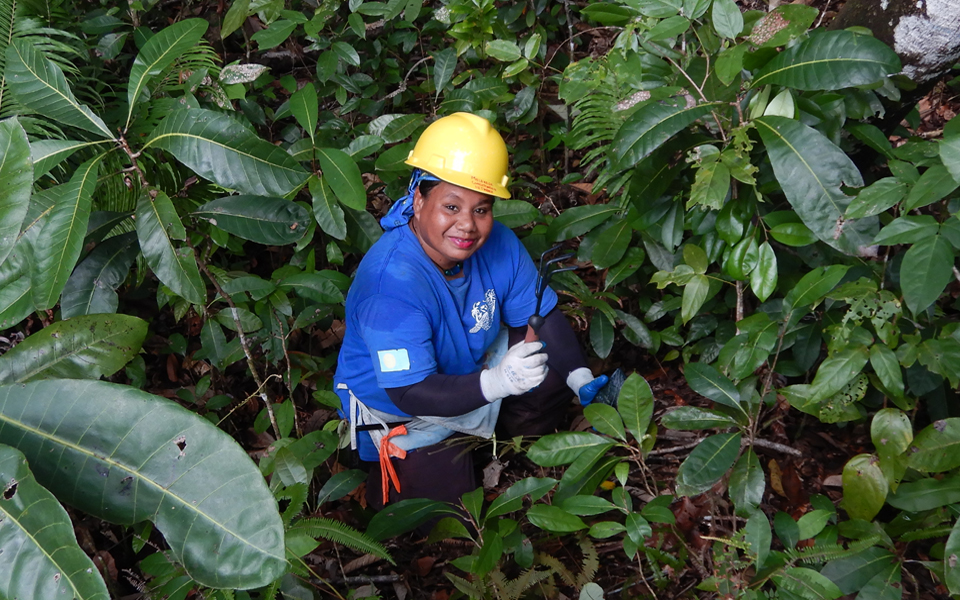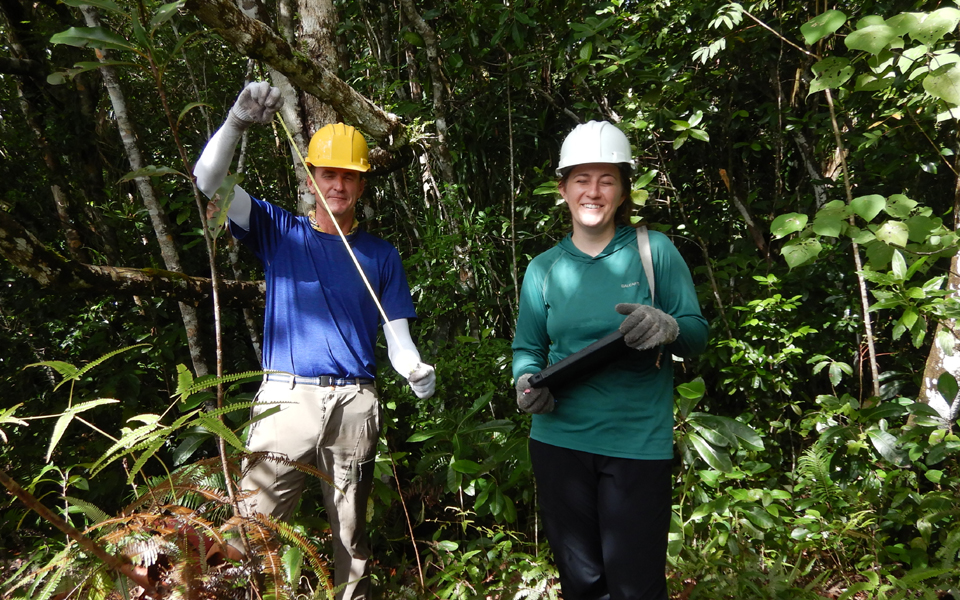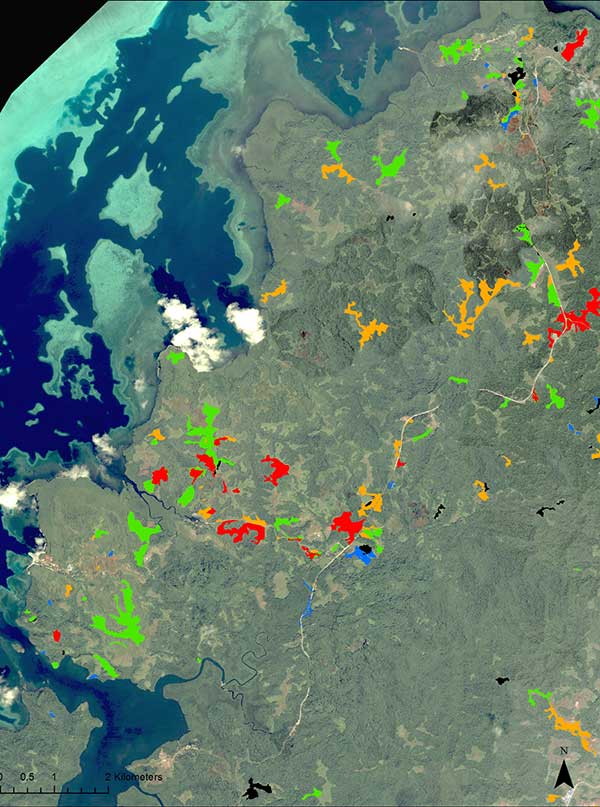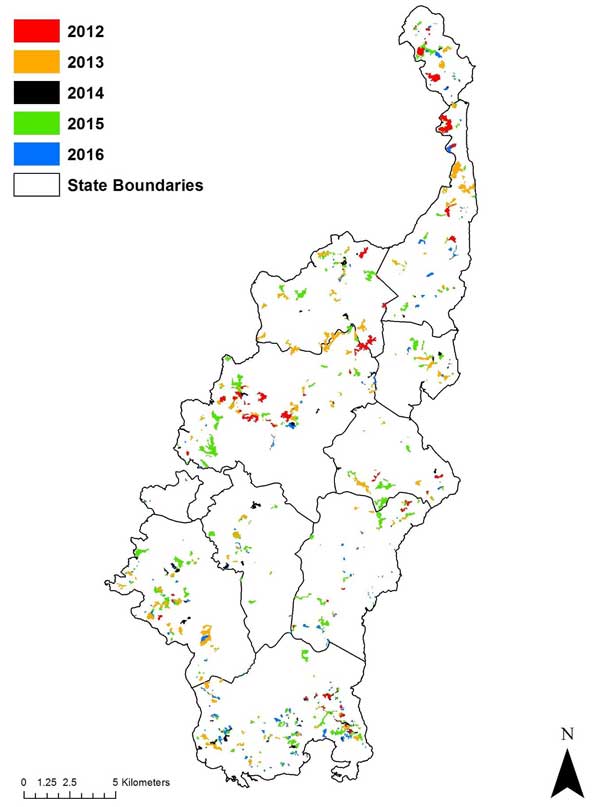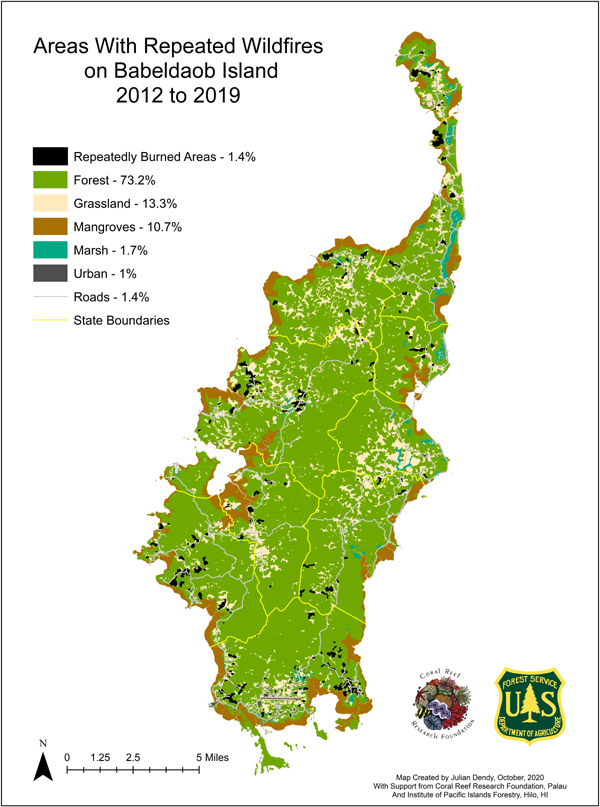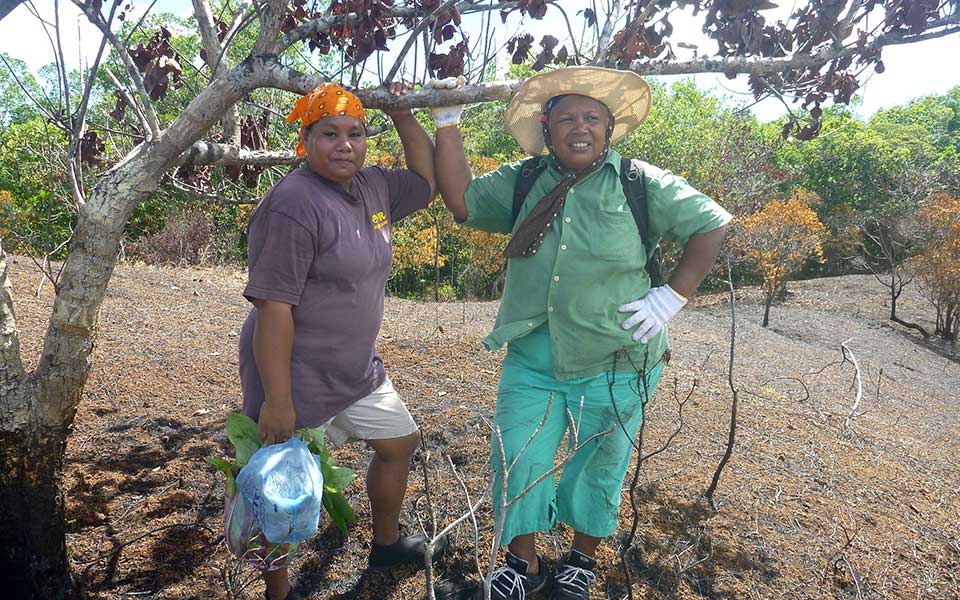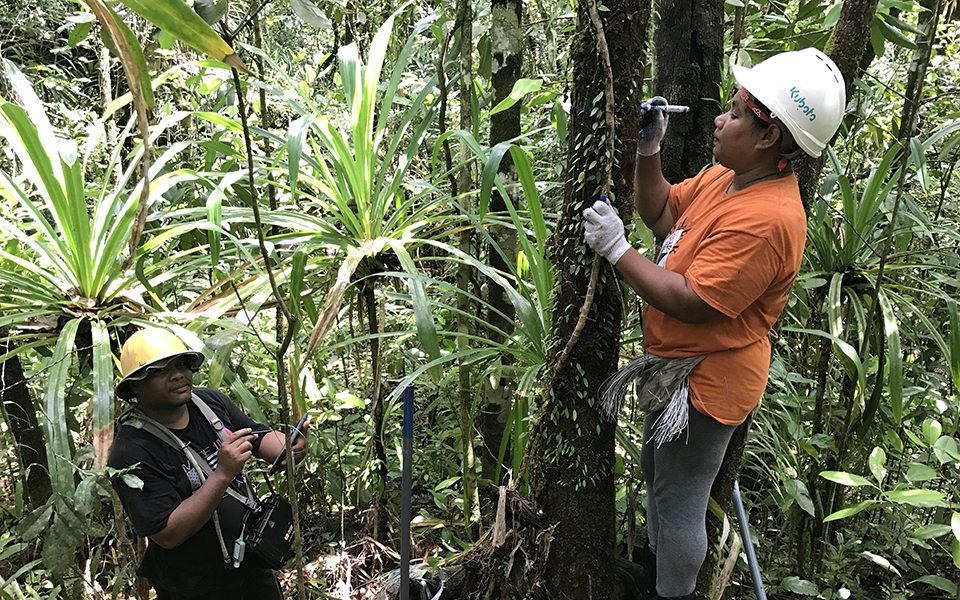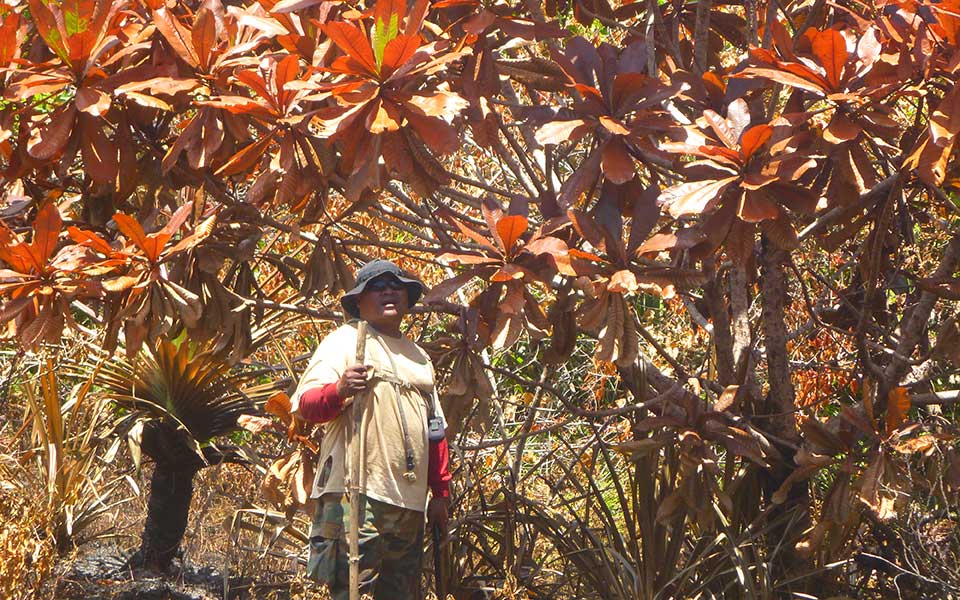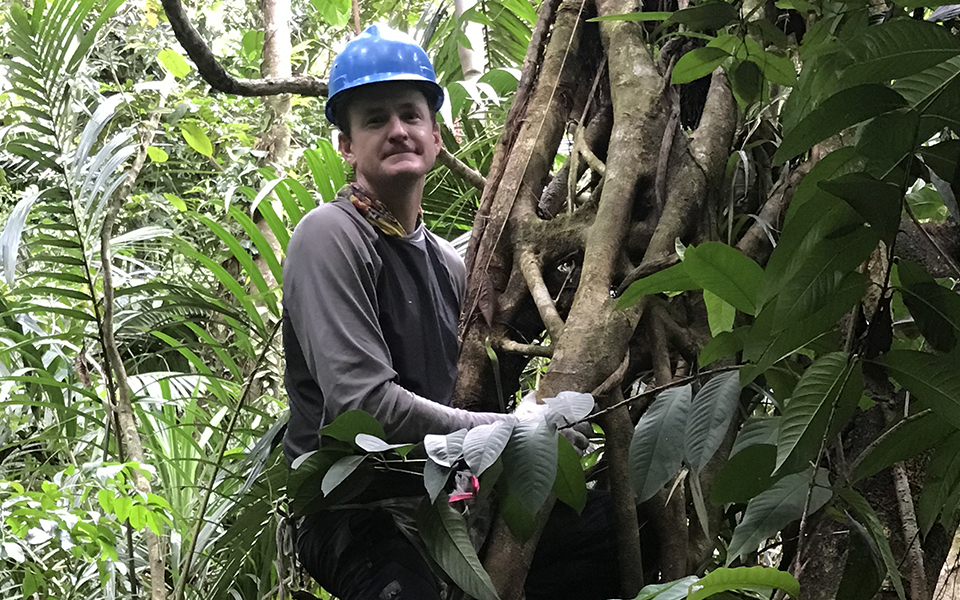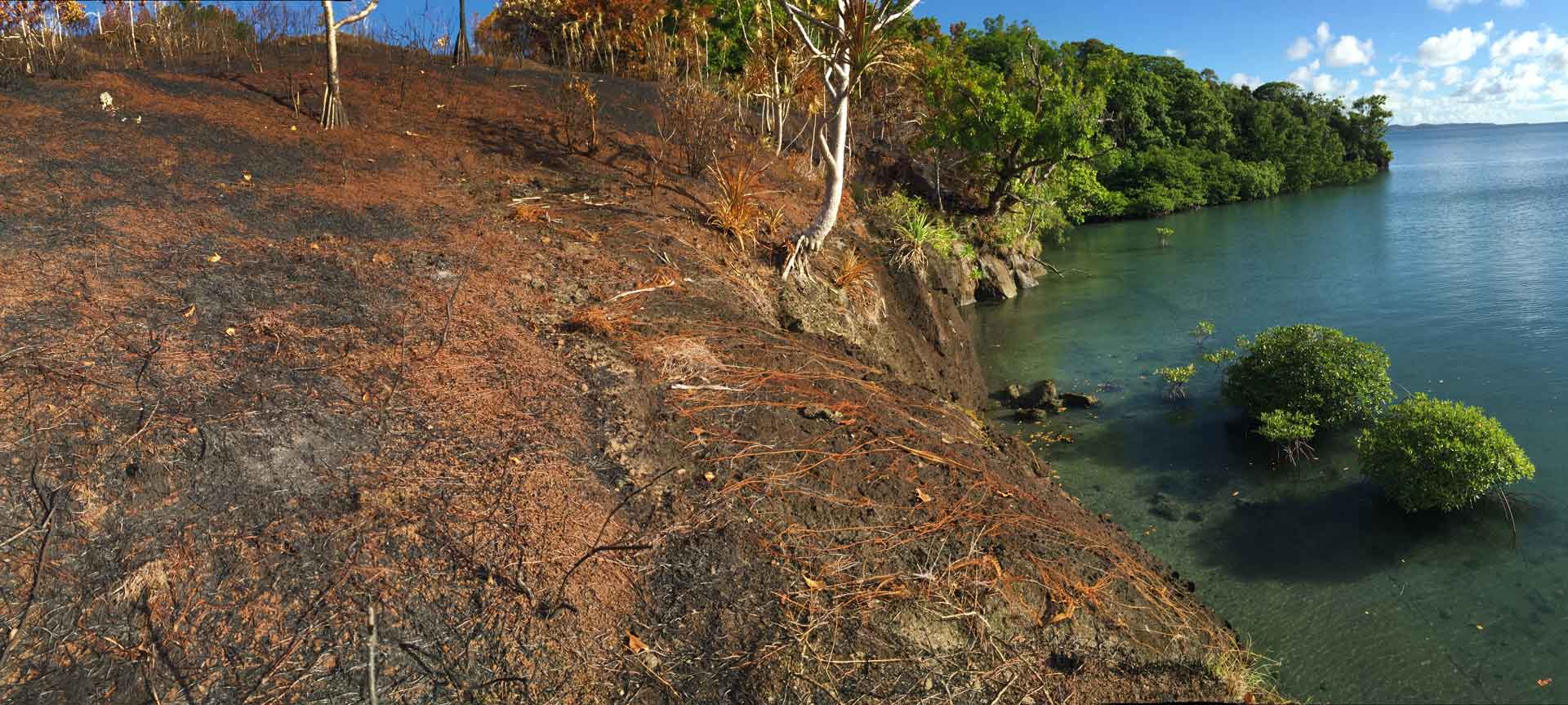Landscape Change – Why Study Landscape Change?
Knowing how landscape has changed over time provides valuable information for conservation land managers and for guiding community development and restoration efforts.
Babeldaob Island contains the largest area of intact native lowland forest in the Pacific. The forests of Babeldaob are the most diverse forests in Micronesia and are vital to maintain Babeldaob’s watersheds, near shore environment, and forest resources. To understand where and how much forests and vegetation have changed over time on Babeldaob, a collaborative group analyzed historical aerial photos and satellite imagery over a 93-year time period. We showed that forests have increased while mangroves remained stable during this period. Images were grouped into 4 land cover categories: forest, mangrove, non-forest vegetation (savanna), and non-vegetation (i.e., roads, buildings). This method allowed us to understand how the landscape of Babeldaob has changed over time.
Manual classification was used to classify aerial photos from 1947, 1976, 1992, and 2005 and automated classification was used to classify satellite imagery from 2001, 2005 and 2014. Maps of Babeldaob Island land cover over time and detailed images from Melekeok state show how forest cover has changed between mapped periods. Babeldaob has a moderately fragmented landscape with relatively stable forest interiors and dynamic forest and savanna edges. Forest cover has mostly been increasing since the end of World War II, despite forest edges being periodically affected by wildfires and other land clearing activities. Non-vegetation has increased dramatically from road construction and other urban development but remains the smallest cover type on the island. In 2022, a publication summarizing this work was released in the scientific journal Land. Publication of corresponding historical vegetation data layers in the USFS data archive can be found here.



